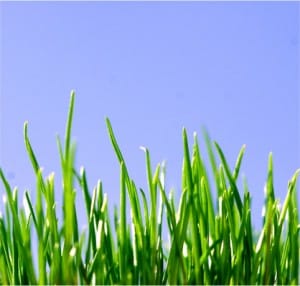Source(s): Clint Waltz, Extension Turfgrass Specialist, The University of Georgia
Warm-season turf grasses such as Bermuda, centipede, zoysia and St. Augustine suffer some common problems with springtime green-up. Here are problems we see most often.
Mowing height is the most common problem as these grasses go from dormancy to active growth. Scalping is more common in zoysia grasses, especially in the denser-growth cultivars like Emerald.
Zoysia grasses don’t tolerate scalping as Bermuda will. As a rule, zoysia will be set back anytime it’s cut low enough that you can see the black mold under the leaf canopy. This is generally below the node of the growing leaves. It can occur at any mowing height from as low as 0.5 inches to more than 3 inches.
Regardless of the grass species and normal mowing height, taking the grass down below the node will set it back. Generally, the higher the mowing height, the more this is a problem.
Ideally, maintain Bermuda grass and centipede between 1 and 2 inches, zoysia from 0.5 to 2 inches and St. Augustine from 2 to 3 inches.
Mowing frequency is just as important as mowing height. If you remove more than one-third of the leaf height at a single mowing, the grass will be stressed.
Fertility requirements differ with each grass. Consult your county University of Georgia Extension Service agent or visit www.GeorgiaTurf.com for fertility recommendations.
No matter what the species, though, fertilizing too early in the season, before soils are warm enough to support continual growth, can accelerate green-up but cause detrimental long-term effects.
Fertilizing these grasses in late-winter or early spring can cause them to break dormancy. Then when the inevitable late-season cold snap hits, they’ve used their stored food reserves. They have no energy to withstand environmental extremes. To avoid this, don’t fertilize until the soil reaches 65 degrees.
Thatch, as lawns get older, becomes more problematic, particularly if the turf has been mowed above its recommended height ranges. Increased thatch slows down the turf’s spring transition. It makes it more susceptible to disease, too.
Water — either too much or too little or even a combination of the two — can cause problems for grasses, especially zoysia.
Diseases can strike during spring green-up. The most common is Rhizoctonia large patch, which appears as large areas of blighted grass.
This disease is most active when night temperatures are between 50 and 60 degrees. When conditions are right, it’s common for the disease to become active first in the fall and then again in the spring.
You can see its typical “halo” when the disease is active. Fall and spring fungicide applications can control it. Consult your county UGA Extension agent for proper fungicides and rates.
Applying nitrogen just before or during active infection will increase disease problems.
Cool temperatures make centipede and zoysia slower to green up in the spring.
Microclimates can cause problems, too. Emerald zoysia growing north of Atlanta has been killed by the low temperatures in shaded sites that don’t get much winter sun.
Varietal differences can be troublesome. Some incidences suggest that many types of Emerald zoysia exist in the landscape and green up at different rates.
Cooperative research with the Georgia Crop Improvement Association and Auburn University is under way to evaluate these grass differences.
Resource(s):
Center Publication Number: 147
- Know The Fertlizer Numbers - September 24, 2013
- Fertilizer Calculations for Attractive, Healthy Lawns - September 24, 2013
- Manage Phosphorus Carefully in Lawns - September 24, 2013
